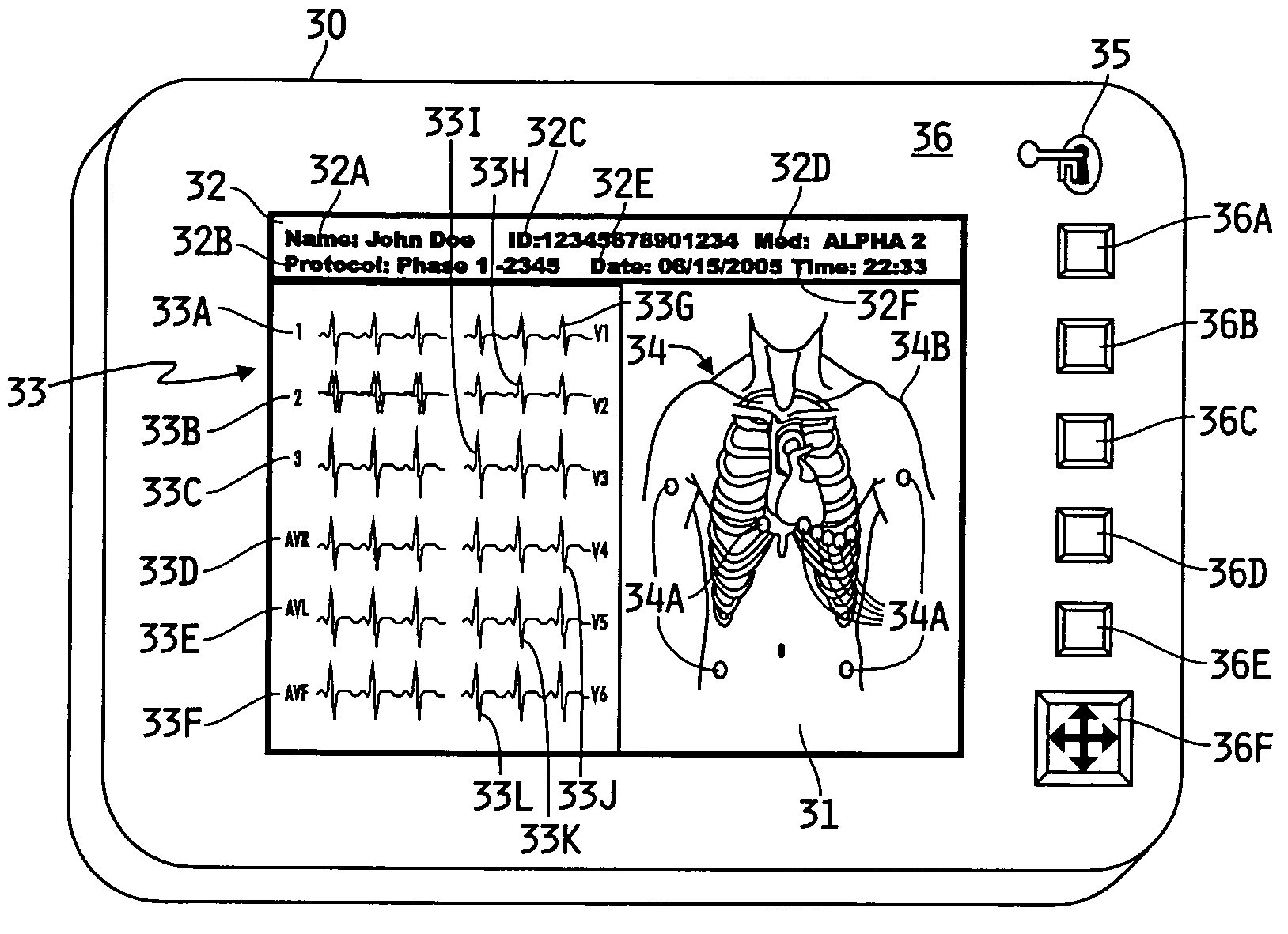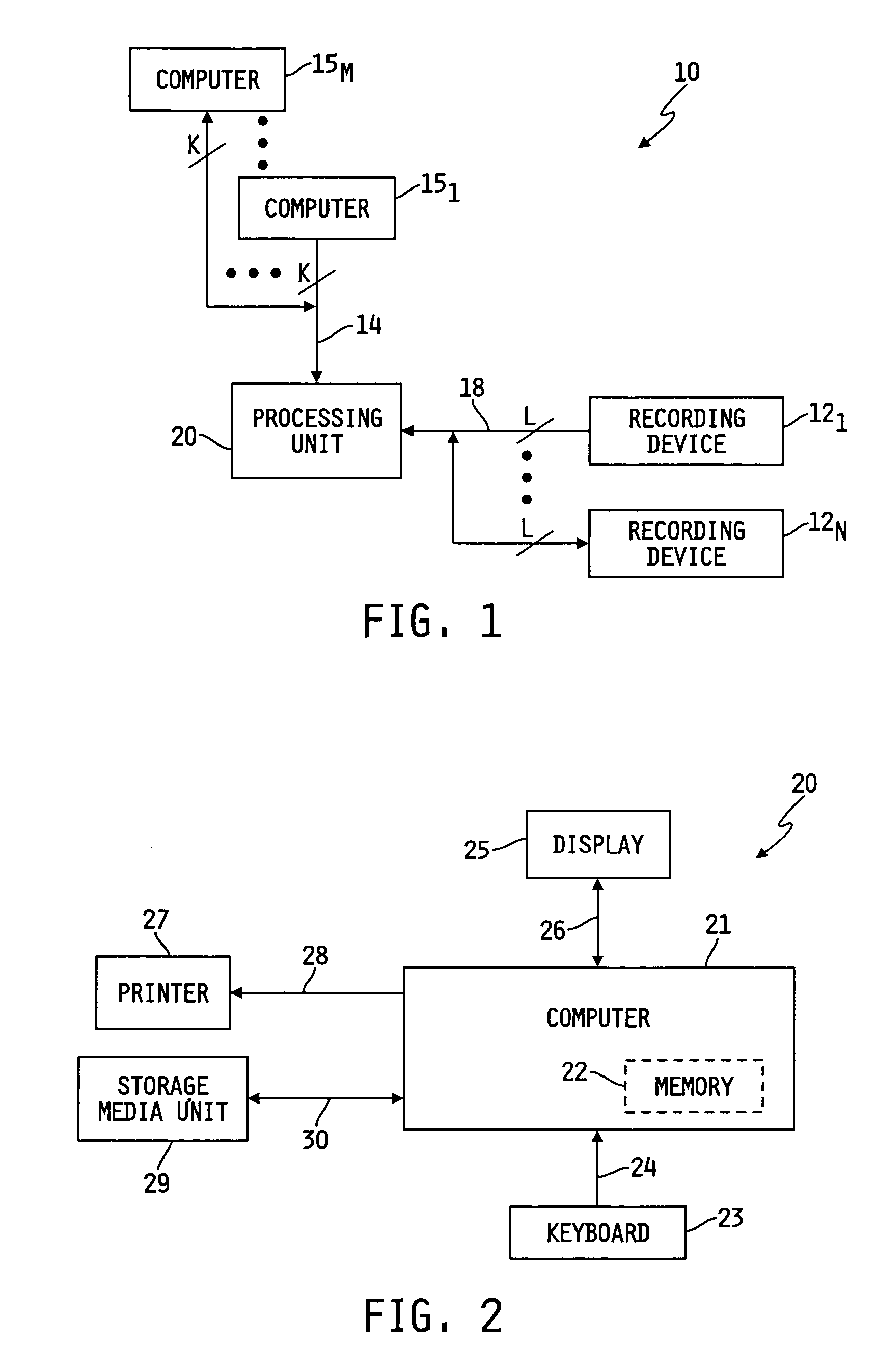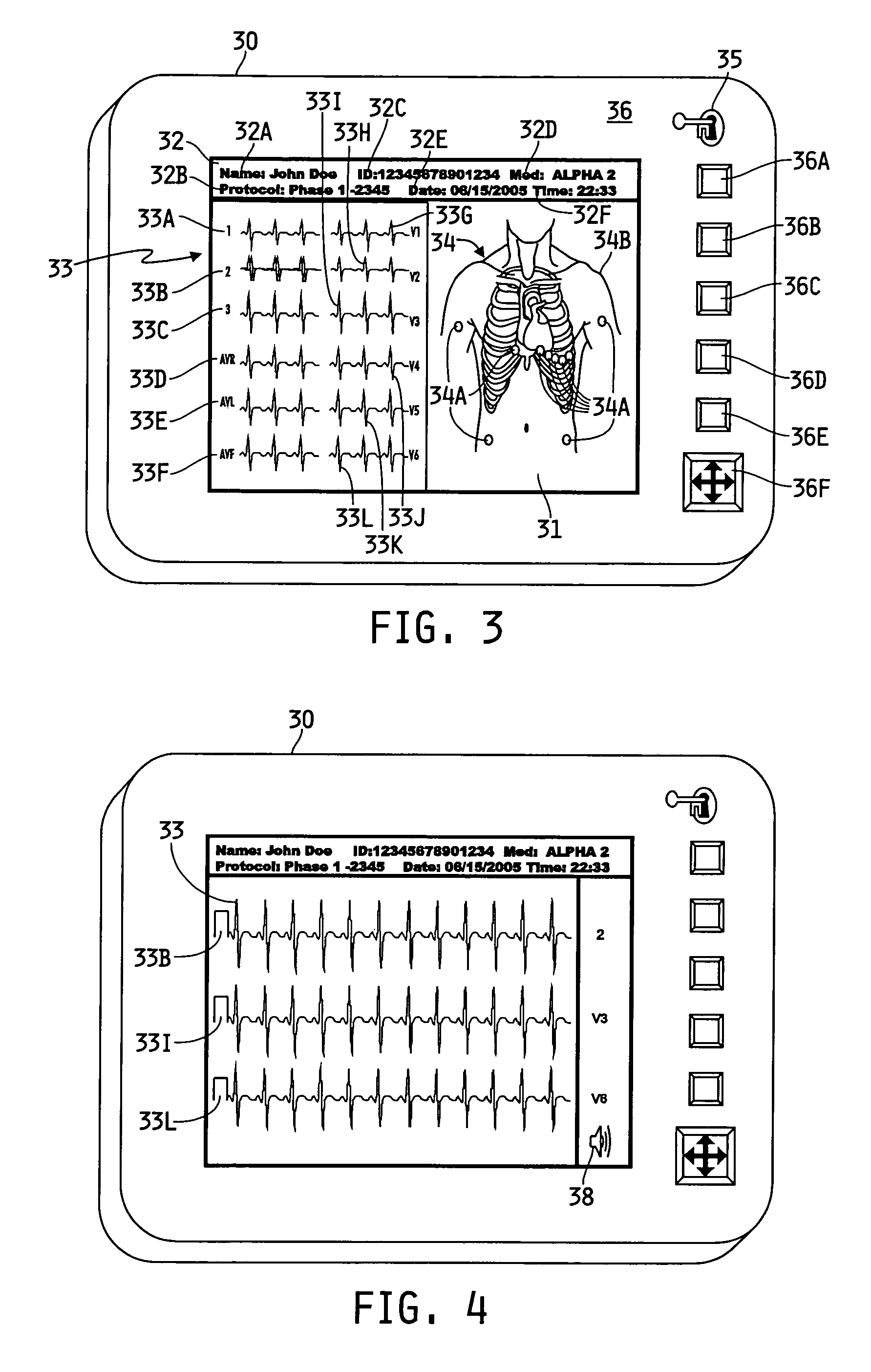[0009] The specific characteristics of the disclosed collection system may vary generally, and may vary depending on whether the system is for clinical use or for pharmaceutical testing. If the system is being used for pharmaceutical testing, the characteristics may vary depending on which phase of testing is involved. For example, Phase 1 testing generally requires more robust recording devices and management tools than does Phase 2 testing. Similarly, the composition of a clinical system, not involved in pharmaceutical testing, may vary from the system(s) used in Phase 1 or Phase 2 testing. Generally speaking, however, each system illustratively may comprise generally one or more recording devices and a management device or system. Each recording device may be an ambulatory medical recording device (AMRD).
[0010] The management device or system may be control circuitry and associated software integral to each recording device and/or it may be one or more computers at a central site, or one or more computers at one or more remote sites, or any combination of central and remote site computers and recording device processors. If the management device is separate, in whole or in part, from the recording device(s), then each recording device may be connected with the management device, and vice versa, through any suitable wired or wireless communication protocol, connection or interface. No matter the number or location of central and/or remote computers, they may, but need not be networked with one or more of the other computers. In any event, the remote computers and the recording devices illustratively will be able to communicate with the central site computer(s) via a wired or wireless, two-way signal path or connection. The connection may be a secure connection. The computers can be any computer, including an industry standard computer running industry standard software, such as for example a personal computer running windows software.
[0011] The management device or system may manage various aspects of the data gathering, storage and analysis, including data download and database file creation. Illustratively, the management device used in pharmaceutical testing may initialize each AMRD simultaneously by transmitting to each AMRD for upload, the entire patient class demographics, including a guaranteed unique identification (GUID), as well as the test protocol. The test protocol may include start times, security options, a listing of patient events or symptoms, and alarm/patient/staff notifications. As noted, the management device also assigns a unique serial number to each of the patients and associates one serial number with a single AMRD per protocol. The AMRD and the management device may retain indefinitely, and retrieve, the study and class demographics and protocols. During the course of Phase 1 testing, the management system may receive ECGs transmitted over a wireless connection for immediate display and/or printing. This immediate transmission of ECG data may be initiated by a user, for example by actuating a transmit button on the AMRD, or may be initiated automatically by the software in response to a certain event or scheduled time. The ECG can also be observed at any time on the AMRD display. The management system may prescribe and collect from each AMRD, pre-programmed, timed ECG output so dosing schedules and titration timings are precise. The management software may provide for the confirmation of successful ECG transfers and may assure the avoidance of redundant transfers. The management system can also retrieve previous or baseline ECGs for comparison and can track changes to the data. Illustratively, the management system can automatically analyze the physiological data, including the ECG data, can provide tools for manual analysis of the ECG data and editing of the automatic analysis, and may interface with third party computers and tools for analysis and storage of data. The management system can also collect data from the AMRD entered by a user from a patient activated patient events and symptoms list. The management system used in Phase 2 testing, may be one or more remote site computers in communication with the central computer used during Phase 1 testing. The remote computer may transmit data to the central computer using standard information technology hardware and software, for example using the Internet and XML format. The remote computer may send data immediately or using a scheduling program for after-hours transmissions. The management system used in a clinical setting, such as a doctor's office or in a clinic, may comprise a non-server manager for communicating, printing, archiving, and editing ECGs from an AMRD. In this setting, a plurality of AMRDs is not required. Such a clinical system may include software to allow processing of data not only in XML format, but also may be compatible with International Society of Holter and Noninvasive Electrocardiology (ISHNE) protocols or standards for collection, storage and transmission of data from Holter analyzers. The system may also receive data from
 Login to View More
Login to View More  Login to View More
Login to View More 


